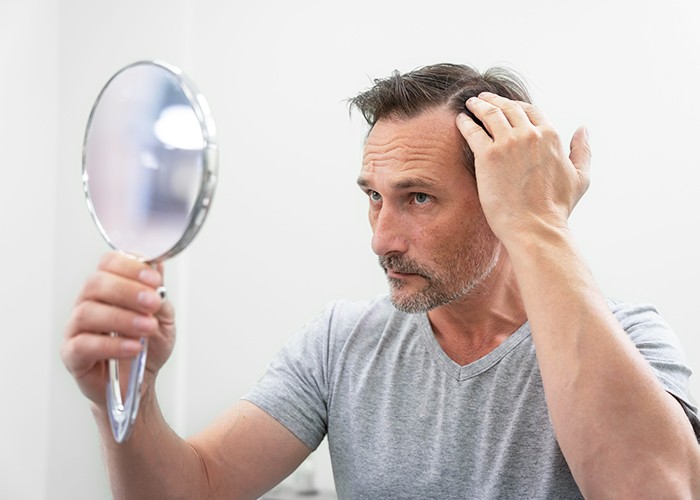Living with pain can be exhausting, especially when it feels like it just won’t go…

How Does PRP Compare to Hair Transplants for Hair Loss?
Experiencing hair loss can be stressful, affecting both appearance and confidence. Many individuals explore multiple treatment options, but it’s essential to understand which solution suits their needs best. Two of the most discussed approaches are PRP therapy and hair transplants. While both aim to restore hair, they differ significantly in procedure, effectiveness, and recovery. Dalton Clinic specializes in PRP treatments, offering a minimally invasive, natural solution for hair restoration and overall wellness.
Understanding PRP Therapy
PRP therapy or Platelet-Rich Plasma therapy is a non-surgical, minimally invasive treatment designed to stimulate the body’s natural healing processes. While Dalton Clinic primarily uses PRP for chronic pain, arthritis, and injuries, a portion of treatments addresses hair loss, harnessing the same regenerative principles to restore hair follicles.
Here’s how PRP therapy works for hair loss:
- Blood is drawn from the patient’s arm.
- The blood is centrifuged to separate red blood cells, white blood cells, and plasma.
- Concentrated platelets are then injected into the scalp, targeting areas of thinning or hair loss.
- Growth factors and cytokines stimulate dormant follicles, improve blood flow, and encourage new hair growth.
Benefits of PRP therapy for hair loss:
- Promotes natural hair regrowth
- Stimulates follicle activity without surgery
- Minimal downtime with low-risk side effects
- Complements other hair restoration therapies if needed
PRP is ideal for patients who prefer natural, non-surgical treatments and want gradual, long-lasting improvement without the risks associated with invasive procedures.
Hair Transplants Explained
Hair transplants are a surgical solution that involves relocating hair follicles from a donor area (typically the back of the scalp) to thinning or bald areas. There are two common techniques:
- FUT (Follicular Unit Transplantation): Involves removing a strip of scalp and transplanting follicles.
- FUE (Follicular Unit Extraction): Individual follicles are harvested and implanted, leaving minimal scarring.
While hair transplants can provide immediate density in targeted areas, they come with surgical risks, longer recovery periods, and potential complications such as infection or scarring. They are also usually more expensive than PRP therapy.
Key Differences Between PRP and Hair Transplants
Understanding the differences helps patients choose the best treatment for hair loss:
| Aspect | PRP Therapy | Hair Transplant |
| Procedure Type | Non-surgical, minimally invasive | Surgical, requires scalp incision |
| Recovery | Minimal downtime, few days | Longer recovery, 1–2 weeks |
| Pain & Discomfort | Mild discomfort during injections | Moderate pain post-surgery |
| Natural Growth | Stimulates natural follicles | Transplants existing follicles |
| Risk Factors | Low (uses own blood) | Higher (infection, scarring) |
| Long-Term Results | Gradual improvement over months | Immediate density, permanent |
| Cost | Moderate | Higher, one-time procedure |
Dalton Clinic emphasizes that PRP is a safer, natural alternative for those looking to enhance hair density without surgery. While hair transplants replace hair, PRP strengthens and regenerates existing follicles for long-term results.
Why Dalton Clinic Excels in PRP Treatments
Dalton Clinic is a leader in regenerative therapies, with extensive expertise in PRP therapy for chronic pain, arthritis, injuries, torn rotator cuffs, ligaments, tendons, and hair loss. Here’s why patients choose them:
- Expert Care: All PRP procedures are performed by certified specialists with extensive regenerative therapy training.
- Safe & Natural: Using your own blood minimizes risks and side effects.
- Minimally Invasive: Patients avoid surgical risks associated with hair transplants.
- Customized Plans: Every patient receives a tailored treatment strategy to maximize results.
- Long-Lasting Results: PRP stimulates natural healing and hair regrowth over several months.
By focusing on safety, precision, and natural healing, Dalton Clinic ensures patients achieve noticeable improvements without unnecessary complications.
PRP vs Hair Transplant: Which Should You Choose?
- For early-stage hair loss: PRP is highly recommended. It stimulates dormant follicles, improves scalp health, and delays progression.
- For advanced baldness or large thinning areas: Hair transplants may be more effective in adding density, but PRP can be used in conjunction to enhance graft survival.
- For low-risk, non-surgical preference: PRP therapy at Dalton Clinic offers a safe, natural alternative with minimal downtime.
Frequently Asked Questions (FAQs)
-
How long does it take to see results from PRP for hair loss?
Patients usually notice improvement in hair thickness and density within 3–6 months, with maximum benefits often seen after 6–9 months.
-
Is PRP therapy painful?
Local anesthesia or numbing creams are used to enhance comfort.
-
How often are PRP sessions needed?
Typically, 3–4 sessions spaced 4–6 weeks apart are recommended for optimal results. Dalton Clinic tailors the schedule based on individual needs.
-
Can PRP be combined with other hair restoration treatments?
Yes. PRP can complement medications or hair transplant procedures to improve graft survival and overall hair density.
-
Is PRP therapy safe for everyone?
Since PRP uses the patient’s own blood, it is generally safe for most adults. Patients with blood disorders or infections are evaluated before treatment.
Revitalize Your Hair Naturally with Dalton Clinic
If hair loss is affecting your confidence, don’t wait to take action. At Dalton Clinic, every PRP treatment is designed to stimulate your body’s natural healing, restore hair follicles, and provide noticeable results over time.
Book your consultation with Dalton Clinic today and discover how PRP therapy can help you regain fuller, healthier hair naturally, safely, and effectively.

